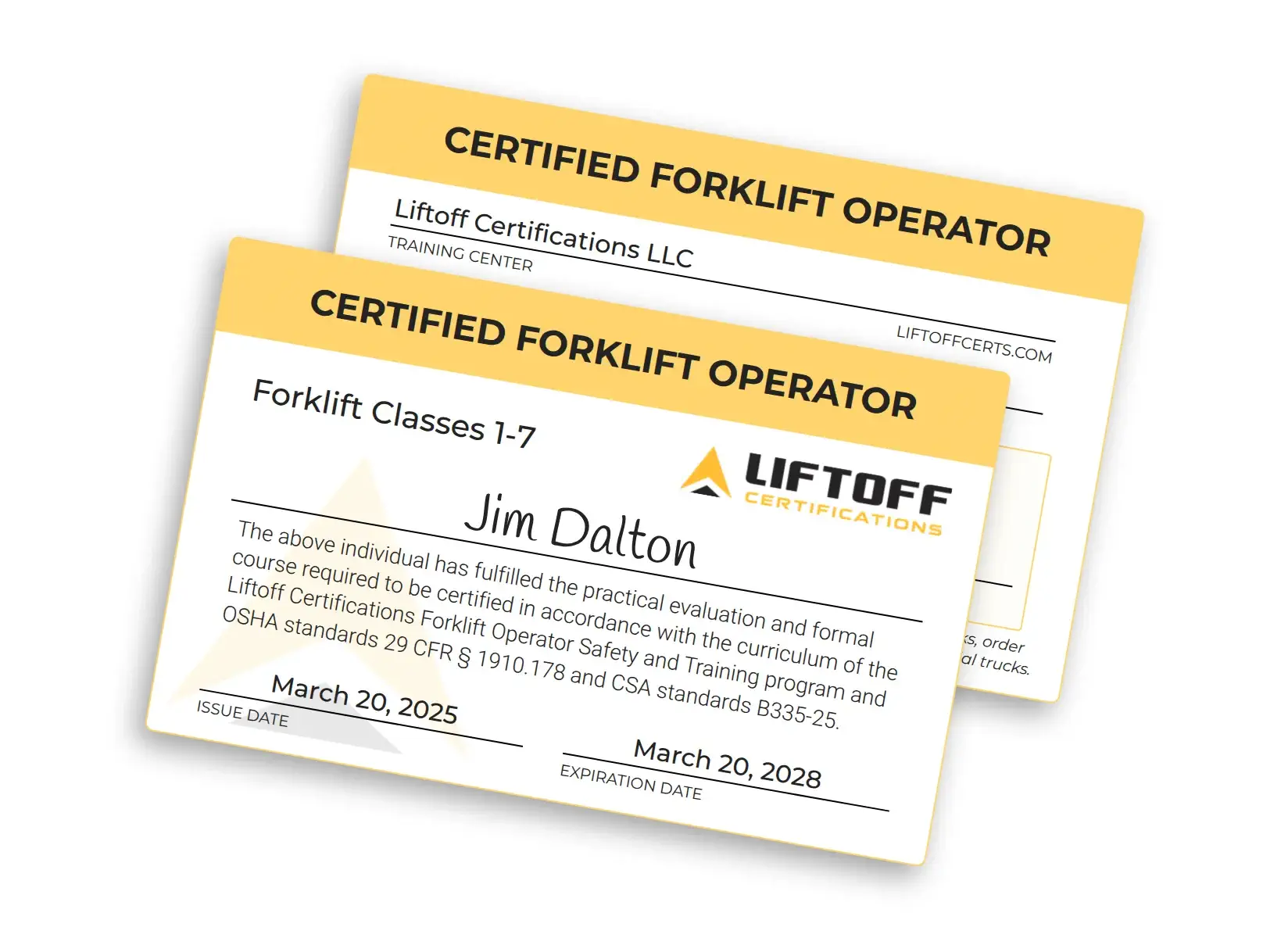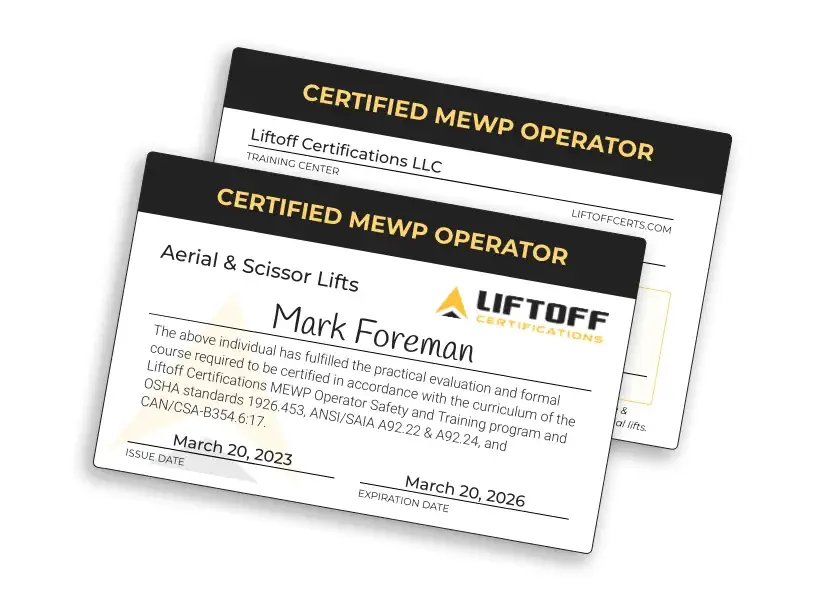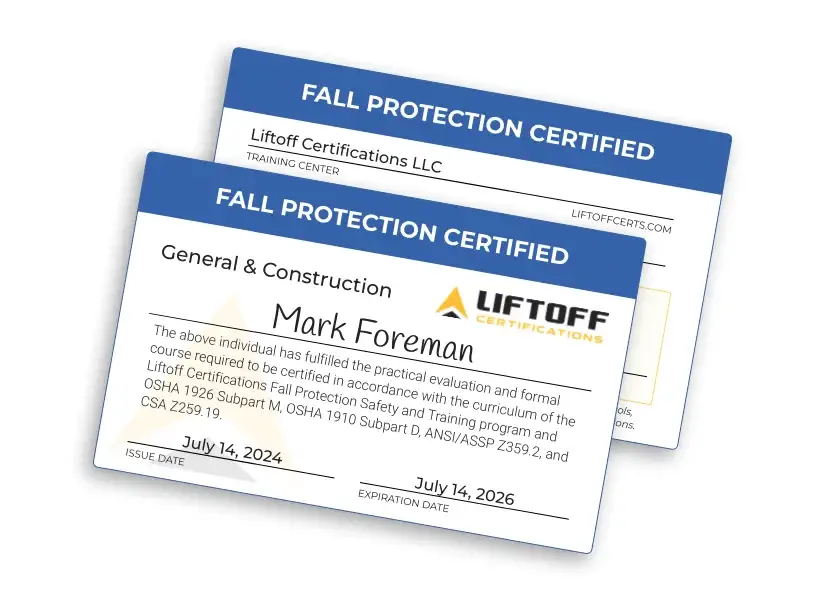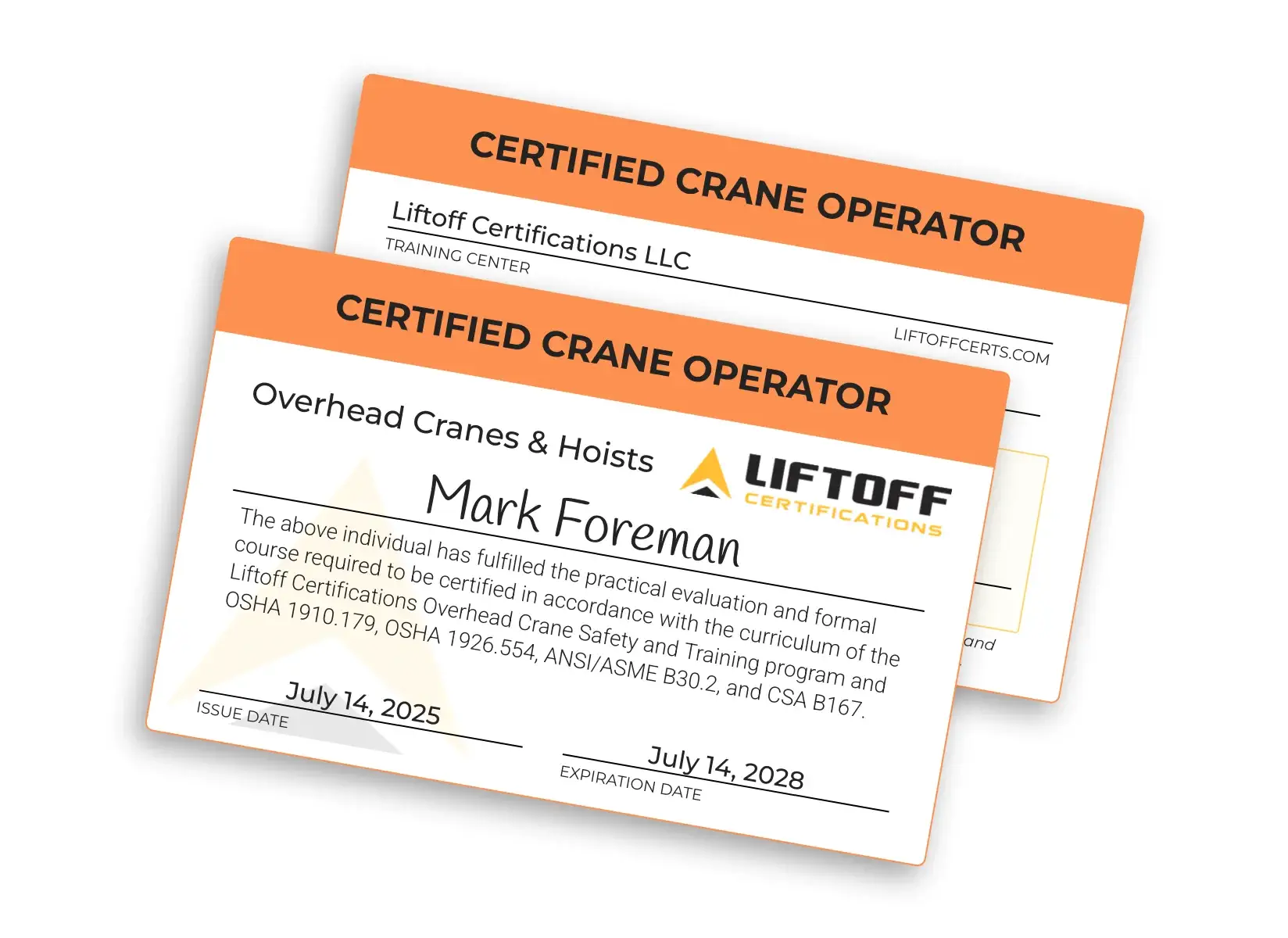OSHA Fall Protection Training Standards: A Guide to the OSHA Requirements
Falls are the leading cause of death in construction, with hundreds of fatal falls occurring each year. Over the past decade, OSHA (Occupational Safety and Health Administration) has made changes to training requirements to better prepare their employees to work from heights.
This guide will walk through each of the OSHA standards in detail, all of which play a part in effective fall protection training. Whether you are an employer, worker, or currently looking to get hired into the field, understanding these regulations can help prevent accidents and save lives.
Note that this overview does not cover ANSI or CSA requirements, which are often used in conjunction with OSHA.
OSHA Standards for Fall Protection Training
OSHA’s fall protection standards are regulations designed to prevent falls and protect workers in industries such as construction, manufacturing, and warehousing. Those standards are:
General Industry (29 CFR 1910 Subpart D): Fall protection is required at heights of 4 feet or more.
Construction (29 CFR 1926 Subpart M): Fall protection is necessary at heights of 6 feet or more.
Scaffolding (29 CFR 1926.451): Fall protection is required at heights of 10 feet or more.
Steel Erection (29 CFR 1926.760): Fall protection is required at elevations of 15 feet or more. Connectors must be protected at 30 feet or two stories, whichever is less.
Note that for some industries, like longshoring and shipyards, there are additional specifications which will not be covered here.
How Often Is Fall Protection Required
For any worker who has never been trained in Fall Protection, theory and hands-on training will be required prior to working at heights. Licenses last for 2 years according to ANSI Z359.2.
Renewing your license is required if your current license has expired or if the following occur
- Your on-the-job performance indicates a gap in knowledge or skill set.
- You are asked to perform work that requires fall protection you are currently not trained and certified to use.
- A workplace condition changes in a way that could affect the safety of you and your colleagues.
- The training receives an update from OSHA, ANSI, CSA or your employer that renders the previous training obsolete.
OSHA mandates that employers provide training for employees exposed to fall hazards. According to OSHA standard 29 CFR 1910.30(a)(1):
“Before any employee is exposed to a fall hazard, the employer must provide training for each employee who uses personal fall protection systems or who is required to be trained as specified elsewhere in this subpart.”
Ways to Take Fall Protection Training
OSHA allows employers to administer fall protection training through methods that prioritize flexibility and accessibility. There are two primary ways that a worker, manager or employer will receive their fall protection training.
Online Training: Online platforms offer flexible and comprehensive fall protection training programs. For instance, Liftoff Certifications provides a 100% online Fall Protection training for all roles, including the Competent Person training. Students can train at their own pace and receive a certificate upon completion. This type of training is also much more affordable than in-person training.
In-Person Training: In-person training remains a vital component of fall protection education, especially for hands-on practice. These would be instructor-led courses that teach relevant concepts, proper usage, and pre-use inspection requirements of fall arrest or confined space systems.
With both types of training, a hands-on practical is going to be required. For online training platforms like Liftoff Certifications, you would be expected to receive a Practical Evaluation Checklist to be used by someone on staff to complete the hands-on.
General Industry Training Requirements: 29 CFR 1910 Subpart D
The General Industry standard applies to workplaces outside of construction, maritime, and agricultural sectors. It sets requirements for walking-working surfaces, focusing on slip, trip, and fall hazards.
The standard covers many topics, including:
- Guardrails: Fall protection must be provided for unprotected edges at elevations of 4 feet or more.
- Fixed Ladders: Fall protection is required on fixed ladders exceeding 24 feet (29 CFR 1910.28(b)(9)).
- Floor Holes: Must be covered or protected by guardrails (29 CFR 1910.28(b)(3)).
- Dockboards: Must have run-off protection or a system to prevent falls (29 CFR 1910.28(b)(5)).
Construction Training Requirements: 29 CFR 1926 Subpart M
The Construction standard is stricter due to the high-risk nature of construction sites. It mandates fall protection at lower heights compared to general industry.
With this standard, you would be expected to learn about many topics, including:
- Edges: Unprotected sides and edges (29 CFR 1926.501(b)(1)) and leading edges: (29 CFR 1926.501(b)(2)).
- Roofing: Work on low-slope roofs exceeding 6 feet (29 CFR 1926.501(b)(10)).
- Floor Openings: Must be guarded or covered.
- Hoist Areas: Workers must be protected by guardrails or personal fall arrest systems (29 CFR 1926.501(b)(3)).
Scaffolding Training Requirements: 29 CFR 1926.451
Scaffolding is common on construction sites, and OSHA has dedicated regulations to prevent falls from these temporary work platforms. Keep in mind that there is some overlap with the construction requirements.
This standard will be even more specific than the construction standard and will cover topics such as:
- Using Fall Protection: Guardrails, personal fall arrest systems, or safety nets. Guardrails must be installed on all open sides and ends of platforms (29 CFR 1926.451(g)(4)).
- Suspended Scaffolds: Workers must use a personal fall arrest system at all times (29 CFR 1926.451(g)(1)).
- Planks: Scaffolds must be fully planked and secured to prevent tipping or displacement (29 CFR 1926.451(b)).
Steel Erection Training Requirements: 29 CFR 1926.760
Steel erection poses unique fall hazards due to the nature of structural steel assembly. The standard reflects the realities of working at extreme heights.
Fall protection for steel erection typically covers topics like:
- Connectors: Workers must be protected by personal fall arrest systems or positioning devices at heights of 15 feet or more (29 CFR 1926.760(a)).
- Controlled Decking Zones (CDZs): Fall protection is required at 30 feet or two stories, whichever is lower (29 CFR 1926.760(c)).
- Guardrails and Perimeter Safety Cables: Must be installed as soon as the structural steel frame is complete.
- Walking Surfaces: Employees walking or working on structural steel must be protected by a safety net or personal fall arrest system.
The Critical Role of Fall Protection Training
OSHA’s comprehensive fall protection standards serve as the foundation for reducing these risks, safeguarding workers, and fostering a culture of safety. Adhering to these standards is not just a regulatory requirement but a vital step in preventing avoidable accidents and saving lives.
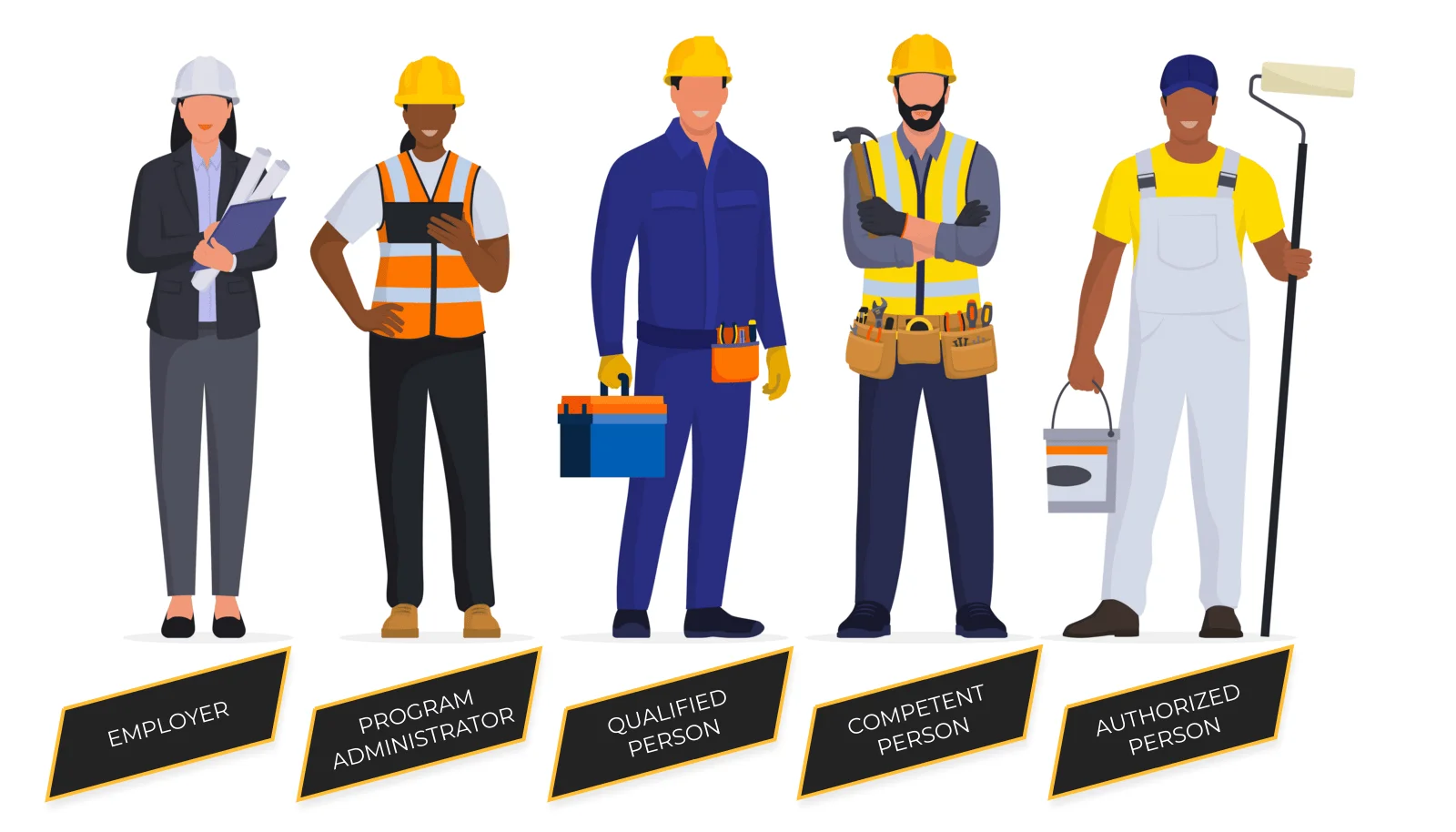
Training is required for all roles, including:
- Employers
- Program Administrators
- Qualified Persons
- Competent Persons
- Authorized Persons
Employers must prioritize fall protection training, ensuring that all workers – whether in general industry, construction, scaffolding, or steel erection – receive thorough education on hazard recognition, equipment use, and emergency procedures. With flexible options for online and in-person training, access to life-saving knowledge has never been easier.
Get Forklift, MEWP & Fall Protection Certified Today with Liftoff Certifications
Liftoff Certifications offers some of the industry’s most affordable Forklift Operator, MEWP (Boom & Scissor Lift) Operator, and Fall Protection Certification and Recertification courses and is the gold standard for online OSHA training.
If you are ready to give an online forklift certification or recertification a try, get signed up today for our OSHA Forklift Operator Training.
For our MEWP (Boom & Scissor Lift) training, get signed up today for the OSHA MEWP Operator Training.
And for Fall Protection, get registered for by clicking here for the OSHA Fall Protection Training.
We’ve got you covered with a 100% money back guarantee and we guarantee national acceptance of our OSHA certification.
